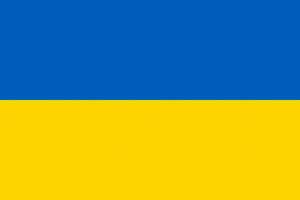Difference between revisions of "Language/Ukrainian/Grammar/Plurals"
m (Quick edit) |
m (Quick edit) |
||
| Line 49: | Line 49: | ||
<br><hr>If you have any questions, please ask them in the comments section below.<br>Feel free to edit this wiki page if you think it can be improved. 😎 | <br><hr>If you have any questions, please ask them in the comments section below.<br>Feel free to edit this wiki page if you think it can be improved. 😎 | ||
==Videos== | |||
===Ukrainian Lesson 7. Plural Nouns - YouTube=== | |||
<youtube>https://www.youtube.com/watch?v=ZUmGaKZvuNc</youtube> | |||
===Plural of Nouns in the masculine gender in Ukrainian # 22 - YouTube=== | |||
<youtube>https://www.youtube.com/watch?v=WHzfmDlHSeQ</youtube> | |||
{{Ukrainian-Page-Bottom}} | {{Ukrainian-Page-Bottom}} | ||
Revision as of 16:06, 22 February 2023
Plurals are an important part of the Ukrainian language. They are used to express more than one of something, and they can be tricky to master. In this lesson, we'll look at the basics of Ukrainian plurals and how to use them correctly.
Nouns
Nouns are words that refer to people, places, things, or ideas. In Ukrainian, nouns can be singular or plural. To form the plural of a noun, you need to add a suffix to the end of the word.
Singular and Plural Suffixes
The most common suffix for forming the plural of a noun is -и. For example, the singular form of the word друг (friend) is друг, and the plural form is друзі (friends).
Other common suffixes for forming the plural of a noun are -а, -ы, and -я. For example, the singular form of the word книга (book) is книга, and the plural form is книги (books).
Irregular Plurals
Some nouns have irregular plurals. These nouns do not follow the usual rules for forming the plural. For example, the singular form of the word день (day) is день, but the plural form is дні (days).
It's important to learn the irregular plurals of nouns, as they are very common in Ukrainian.
Adjectives
Adjectives are words that describe nouns. In Ukrainian, adjectives must agree with the nouns they describe in number. That means that if the noun is singular, the adjective must be in the singular form, and if the noun is plural, the adjective must be in the plural form.
For example, the singular form of the adjective великий (big) is великий, and the plural form is великі (big).
Adjective Endings
The endings of adjectives change depending on the gender and number of the noun they describe. The most common endings for adjectives are -ий, -а, -о, and -е.
For example, the masculine singular form of the adjective великий (big) is великий, and the feminine plural form is великі (big).
Irregular Adjectives
Some adjectives have irregular forms. These adjectives do not follow the usual rules for forming the plural. For example, the singular form of the adjective добрий (good) is добрий, but the plural form is добрі (good).
It's important to learn the irregular forms of adjectives, as they are very common in Ukrainian.
Conclusion
In this lesson, we've looked at the basics of Ukrainian plurals and how to use them correctly. We've seen how to form the plural of nouns and adjectives, and we've also looked at some of the irregular forms.
If you want to learn more about Ukrainian grammar, why not join the Polyglot Club community? You can find other language learners who can help you with your Ukrainian studies.
If you have any questions, please ask them in the comments section below.
Feel free to edit this wiki page if you think it can be improved. 😎
Videos
Ukrainian Lesson 7. Plural Nouns - YouTube
Plural of Nouns in the masculine gender in Ukrainian # 22 - YouTube
